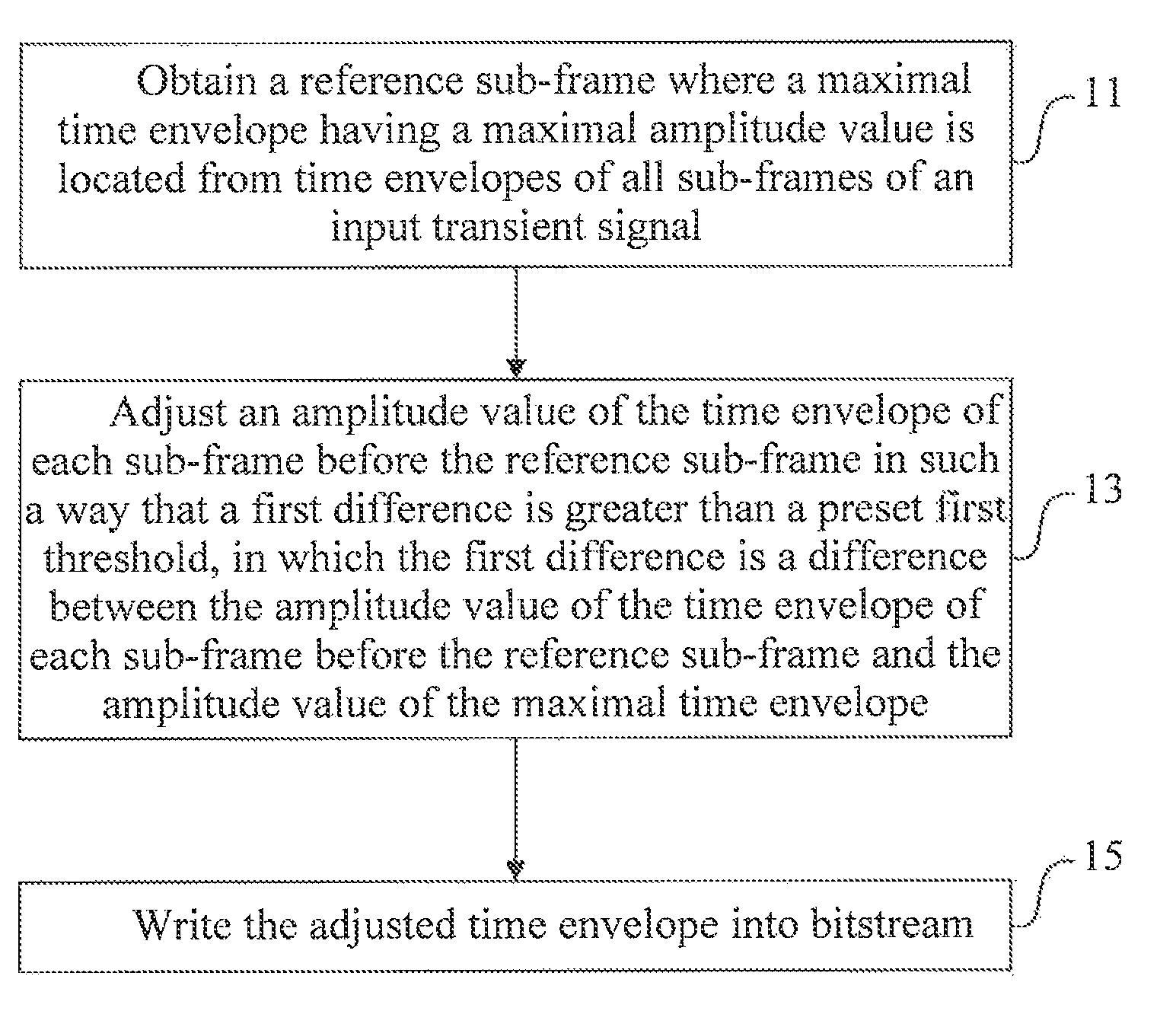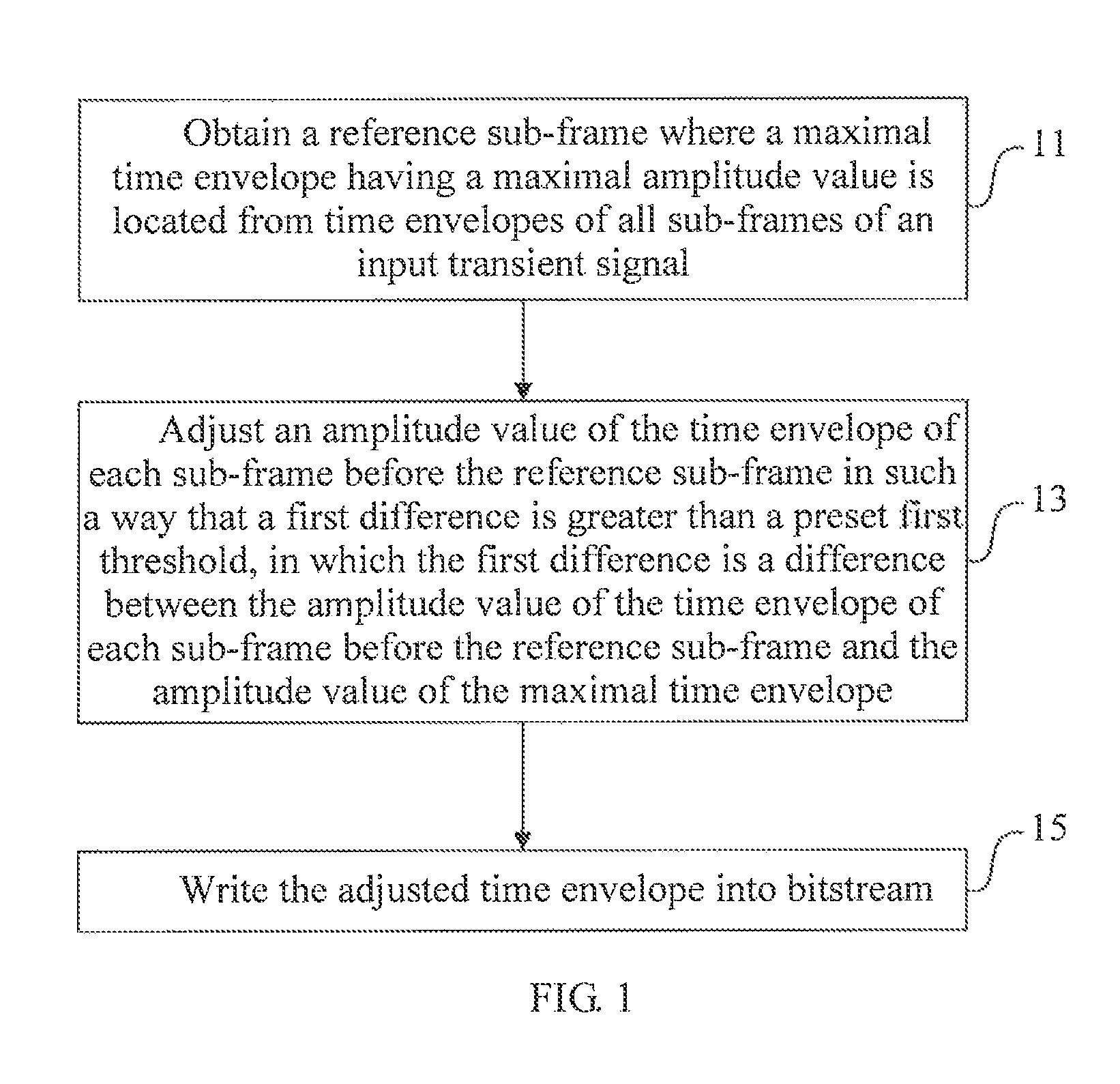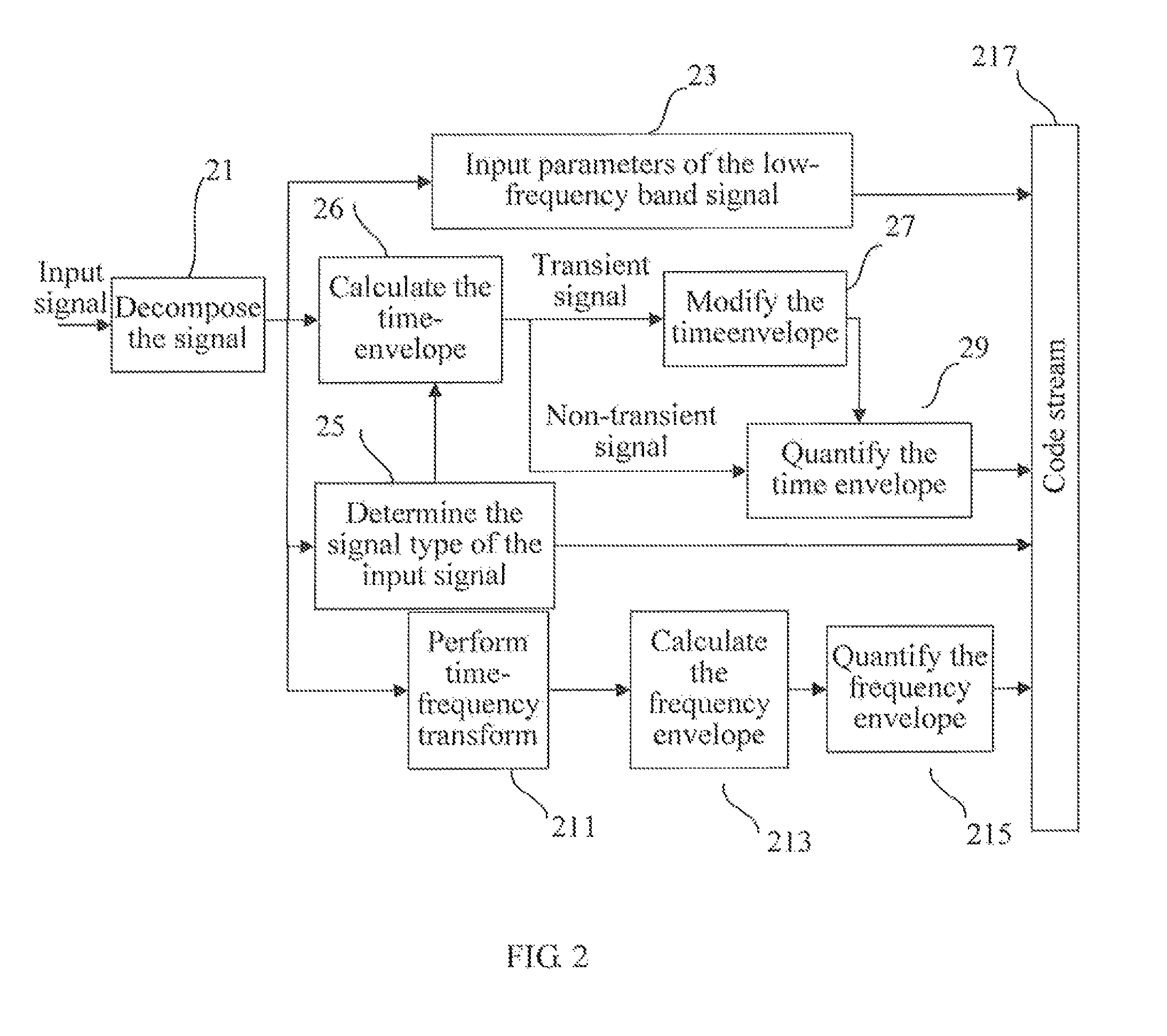Transient signal encoding method and device, decoding method and device, and processing system
a transient signal and encoding technology, applied in the field of communication technologies, can solve the problems of unsatisfactory effect of transient signal recovery at the decoding end, and achieve the effect of improving the effect of transient signal recovery
- Summary
- Abstract
- Description
- Claims
- Application Information
AI Technical Summary
Benefits of technology
Problems solved by technology
Method used
Image
Examples
first embodiment
[0028]FIG. 1 is a flow chart of a transient signal encoding method according to the present invention. As shown in FIG. 1, the method includes the following steps.
[0029]In Step 11, a sub-frame where a time envelope having a maximal amplitude value (that is, a maximal time envelope) is located is obtained from time envelopes of all sub-frames of an input transient signal, in which the sub-frame is the reference sub-frame described in the embodiments of the present invention.
[0030]When the number of bits for encoding an input signal is insufficient, a small number of bits are generally adopted to encode important information of high-frequency band. During the process of encoding the high-frequency band information, when the number of available bits is constant, in order to better recover the high-frequency band information, the input signals may be classified, for example, the input signals may be classified into transient signals and non-transient signal, so as to adopt different enc...
second embodiment
[0042]FIG. 2 is a flow chart of a transient signal encoding method according to the present invention. As shown in FIG. 2, the method includes the following steps.
[0043]In Step 21, an input signal is decomposed into a low-frequency band signal and a high-frequency band signal; and as for the low-frequency band signal, Step 23 is performed, and as for the high-frequency band signal, Step 25 is performed.
[0044]In Step 23, parameters of the low-frequency band signal in the input signal are input into a bitstream; and Step 217 is performed.
[0045]In this embodiment, the parameters of the low-frequency band signal (broadband signal) are input into the bitstream through an encoder.
[0046]In Step 25, a signal type of the input signal (the high-frequency signal) is determined, and signal type information is input into the bitstream, in which the signal type information is configured to indicate whether the input signal (that is, the signal being currently encoded) is a transient signal or a n...
third embodiment
[0086]FIG. 4 is a flow chart of a transient signal decoding method according to the present invention. As shown in FIG. 4, the method includes the following steps.
[0087]In Step 41, a sub-frame where a time envelope having a maximal amplitude value (that is, a maximal time envelope) is located is obtained from time envelopes of all sub-frames of a pre-obtained signal having a signal type of a transient signal, in which the sub-frame is the reference sub-frame described in the embodiments of the present invention.
[0088]The modification of the time envelope of the transient signal may be performed at the encoding end or the decoding end. In this embodiment, the time envelope is modified according to the characteristics of the transient signal at the decoding end, such that in the modified time envelope, the difference between the amplitude value of the time envelope having the maximal amplitude value of the sub-frames of the transient signal and the amplitude values of other time envel...
PUM
 Login to View More
Login to View More Abstract
Description
Claims
Application Information
 Login to View More
Login to View More - R&D
- Intellectual Property
- Life Sciences
- Materials
- Tech Scout
- Unparalleled Data Quality
- Higher Quality Content
- 60% Fewer Hallucinations
Browse by: Latest US Patents, China's latest patents, Technical Efficacy Thesaurus, Application Domain, Technology Topic, Popular Technical Reports.
© 2025 PatSnap. All rights reserved.Legal|Privacy policy|Modern Slavery Act Transparency Statement|Sitemap|About US| Contact US: help@patsnap.com



